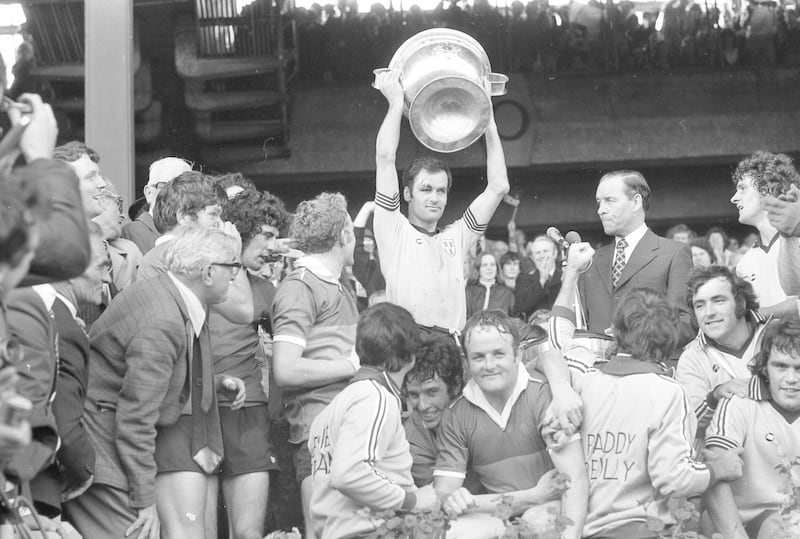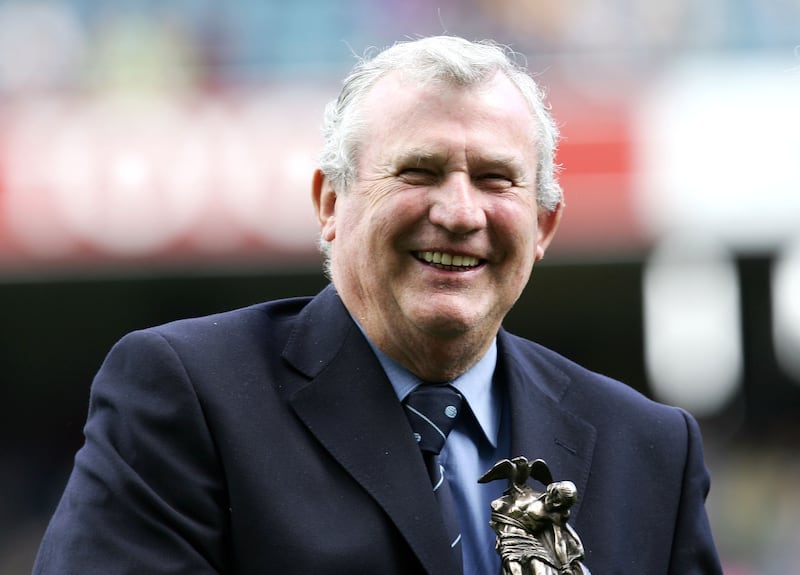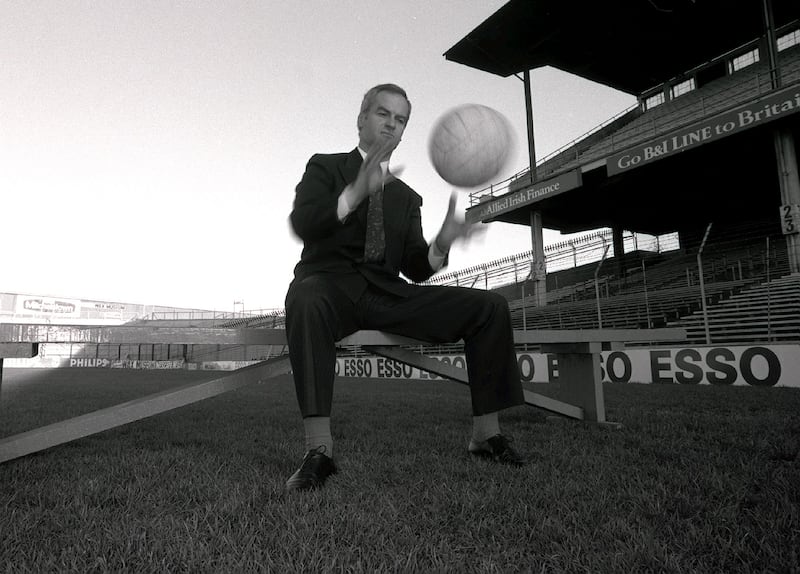This is a significant weekend for GAA anniversaries. On Friday, the association’s foundation in 1884 was marked.
Less momentously November 1st is also the 60th anniversary of a strangely resonant National Football League match between Dublin and Laois in Croke Park.
In those days, league fixtures were played before Christmas as well as afterwards before the season was rationalised at the turn of the century. Dublin’s opening match in the 1964-65 season was in Croke Park.
It came just a fortnight after the previous season’s league had officially concluded with the 1963-64 ‘home’ winners taking a trip to the US to play New York in the grand final.
Dublin had beaten Down over five months previously but lost to New York despite a rousing comeback. New York in those days had a number of high-quality players with intercounty experience and, in all, won three NFL titles.
The match 60 years ago against Laois has been frequently memorialised not for any importance in the result – Dublin won by 1-11 to 0-10 – but because of the goal, scored by Eamonn Breslin.
Ten minutes before half-time, the Dublin centre forward launched himself forward to find the net with a diving header.
[ Ahead of his time – Frank McNally on the day Eamonn Breslin shocked Croke ParkOpens in new window ]
Interviewed years later by Seán Creedon, Breslin, who died in 2021, said: “It was just a spur-of-the-moment thing. The ball came across at the right height and I just headed it past a surprised goalkeeper. Instead of cheering, the crowd waited a few seconds before the umpire and referee agreed that the goal was legal.”
Another aspect of the day, which hasn’t received as much coverage is that it marked the senior, competitive debut for Dublin of a hugely influential figure. Tony Hanahoe was only a year out of minor when he was called up for the league opener.
Although named at wing back, he would go on to become Dublin’s forward orchestrator and Kevin Heffernan’s on-field lieutenant in the 1970s, captaining the team to the All-Ireland in 1976 and a year later with the manager taking a sabbatical, acting as player-manager for the 1977 success, which included the epic semi-final defeat of Kerry, by consensus the high-water mark of the Dubs’ 1970s odyssey.
“The Dublin team at that stage was controlled by senior players,” he says now reflecting on the start of his career.
“There wasn’t great spirit in the team. If you were a fella like coming in, selected at half back, there were very few coming over to give you a hand or anything.
“You were essentially taking the place of someone who was already in the dressingroom. It was nothing like the spirit prevalent in the 1970s.”
He pressed pause on his fledgling intercounty career for a number of years while he attended Trinity College to study law. Eventually, he rejoined in 1970, well in time for the revolution that was to follow.
Hanahoe remembers the contentious goal on his debut.

“I recollect it happening. After a move begun by Brian McDonald [a youthful All-Ireland winner in 1963], who was a very good footballer, and continued by Jack Gilroy [father of All-Ireland winning player and manager, Pat], who scooped the ball out to provide the pass, Breslin had an open goal and decided to head the ball into the net.
“If it was an important game, this could have been quite risky. It was potentially illegal. If it had come crashing off the crossbar and hit his head and went back into the net or if it came off an opponent and bounced off his head into the net, that would have been acceptable.
“But Breslin’s goal was very different. I think it flashed through his mind that he’d do it for fun!”
There was talk of a similar incident after which a headed goal had been disallowed in Cork for “dangerous play” but no verifying sources are extant.
The referee was a young Séamus Aldridge from Kildare. In later years, he said about the incident: “There was no rule against it and there still isn’t as far as I am aware.
“To me it was just like the ball going in off a player’s hand or foot. But the ban was still in force back then and naturally it was a controversial score. It was quickly forgotten by me, but I know it still comes up in quizzes.”
There would be further controversy for him where Dublin were concerned and it centred on Hanahoe.
He refereed the 1978 All-Ireland final, which resulted in a huge win for Kerry despite Dublin having dominated the opening 25 minutes and leading 0-6 to 0-1. They would manage only three further points while Kerry scored 5-10.

In a wide-ranging conversation with Vincent Browne in Magill magazine, Hanahoe, by now a practising solicitor, revealed that he had objected on Dublin’s behalf to Aldridge’s appointment for the final on the basis of previous experience. It was actually a small enough part of the interview but landed the subject in hot water.
Surely, he hadn’t expected his views to go unchallenged?
“I didn’t advert to the fact at all and I didn’t care one way or the other. The fact that I did it a month after indicated that it was very deliberate and not ‘heat of the moment’. I levelled a lot of criticism and some of it was valid and some might have been a bit reckless but it wasn’t all about Aldridge.”
Suspension ensued under a recently introduced directive banning criticism of referees, exacerbated by the player’s refusal to stand down from playing while his appeal was being taken.
It would strike the contemporary reader that the issues raised by Hanahoe’s challenge – for instance, the validity of ‘directives’ not written into the rule book – anticipated by three decades the need to overhaul the GAA’s disciplinary structures.

These were subjected to various, successful court actions down the years. Ultimately the problems led to the establishment of the Disputes Resolution Authority (DRA).
For Hanahoe, although he strenuously contested the view in the Magill interview, and Dublin it was essentially the end of their era. He would return as a selector – again becoming acting manager during Heffernan’s illness in the summer of 1983 before resuming his original role, as the county claimed their next All-Ireland.
Last year after the funeral of his cousin, also a lawyer of the same name who practised in Naas, Hanahoe and family members were waiting for a table in Lawlor’s Hotel.
“This man in a cap and glasses came by and said, ‘Tony Hanahoe?’ I said, yes and he replied, ‘Séamus Aldridge’. I wouldn’t have seen him in decades.”
Does it seem like 60 years since his intercounty career launched in such eventful circumstances?
“It’s pretty frightening!”
